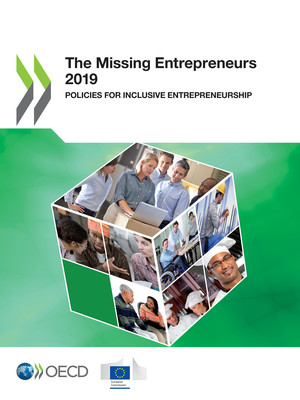copy the linklink copied!15. Czech Republic
This country profile highlights current inclusive entrepreneurship policy issues and recent developments in the Czech Republic. It also benchmarks key self-employment indicators for women, youth, seniors and immigrants against the average for the European Union.
copy the linklink copied!Key trends
The self-employment rate was slightly above European Union (EU) average in 2018 (16.0% vs. 13.5%). It was also above the EU average for women (11.1% vs. 9.6%), youth (9.7% vs. 6.5%), seniors (18.7% vs. 17.7%) and immigrants (19.4% vs. 8.0%). However, the self-employed were less likely than the EU average to have employees, notably women (14.1% vs. 23.3%), seniors (22.4% vs. 31.0%) and immigrants (16.3% vs. 27.6%).
copy the linklink copied!Hot issue
There are ongoing efforts to promote entrepreneurship to youth. In recent years, entrepreneurship education has been slowly embedded throughout the mandatory education system. This has been complemented with several extra-curricular initiatives including a series of business contests such as “Economic Team”, which was organised by the Ministry of Education, Youth, and Sports starting in 2016-17, and Junior Achievement’s “Firm of the Year” content in grammar and trade schools. Moreover, many industry associations are active in promoting youth entrepreneurship, including the Association of Small and Medium-Sized Enterprises and Crafts which has a programme called “Young Business”.
copy the linklink copied!Recent policy developments
Several initiatives have been launched to support entrepreneurs in small and outlying regions. These include the 2017 SME Support Action Plan, which had a measure to support of entrepreneurs from small municipalities (under 3 000 inhabitants) because they face more difficult conditions for starting a business than entrepreneurs from large cities. Moreover, the Czech-Moravian Guarantee and Development Bank introduced the EXPANSION programme in 2017, which focuses on facilitating business loans to entrepreneurs and SMEs in economically disadvantaged regions. The total allocation of the first call was CZK 2.2 billion (EUR 84 million).
This profile is based on a recent country assessment report, which can be found at: www.oecd.org/cfe/leed/inclusive-entrepreneurship.htm.
Metadata, Legal and Rights
https://doi.org/10.1787/3ed84801-en
© OECD/European Union 2019
The use of this work, whether digital or print, is governed by the Terms and Conditions to be found at http://www.oecd.org/termsandconditions.



